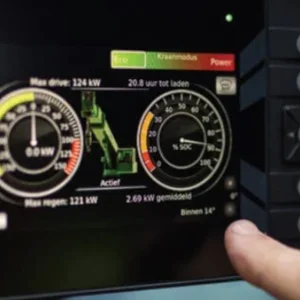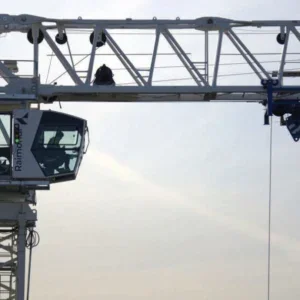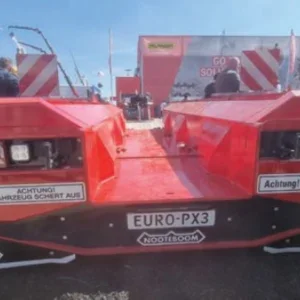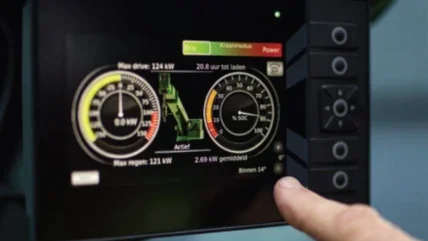
How many electric cranes and hybrid cranes do you have in your fleet and what crane types do they include?
Our electric fleet is growing at pace, from small spider cranes to the strongest land-based crane, the SK6000.
Fully electric cranes are usually the smaller cranes like spider cranes and electric pick and carry cranes. These come in various capacities up to 11t. And, perhaps surprisingly, our strongest landbased crane can operate fully electric as well.
Also, we have a fleet of hybrid cranes. This means the crane travels to the job site using its normal combustion engine. When on site, the lifting can be done using an electric motor and therefore can operate with zero emissions on the jobsite. We have mobile and city cranes up to 100t capacity, Mobile tower-cranes with a capacity up to 132t/m, and truck mounted cranes up to 200t/m.
Our hybrids comprise city, mobile, truck mounted and tower cranes.
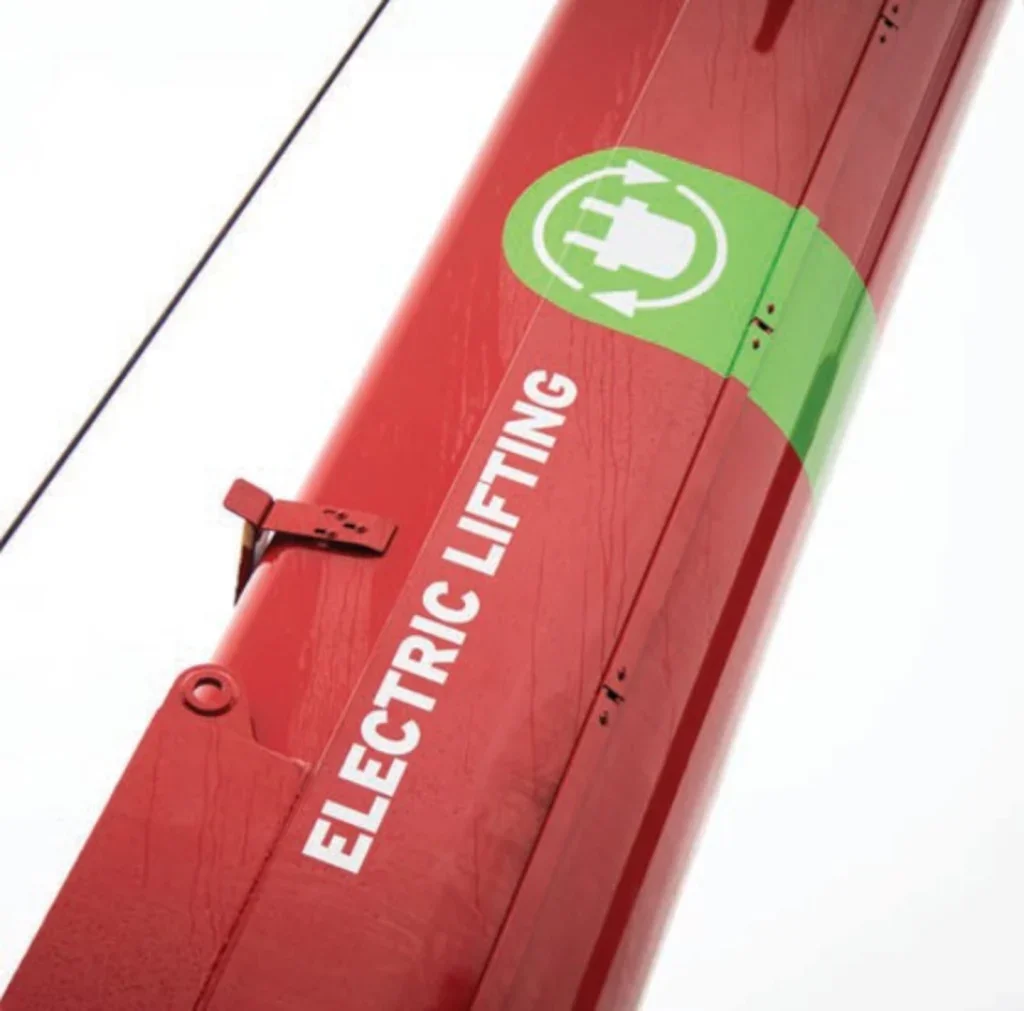
The size of our electric equipment fleet grows week by week, and we are in constant discussion with our suppliers regarding the provision of sustainable heavy lifting and transport equipment. Years ago, Mammoet decided that size does matter and sometimes you just want the size to be small. Like the Hoeflon cranes, which can easily enter a building through the front door. With a wide range of smaller cranes and transport equipment we can basically remove or install every heavy object indoors. Besides these activities, we have expanded our electric capabilities also to the heavier cranes and transport means, such as the SPMT. And larger cranes. This enables us to transport heavy objects without emissions – indoors and outdoors.
Hoeflon mini cranes and carriers undertake work in indoor environments, where it is desirable to reduce carbon emissions and noise. We also have a growing fleet of hybrid cranes – in the sense that driving to the site is fuelled conventionally – or via HVO in the Netherlands, UK and Canada – and lifting is done on site with zero emissions.
Besides these, we have a selection of pick and carry cranes that are electric-operated, and some mobile tower cranes that are also electric for lifting operations. We have proven that electric lifting is possible on any scale – from the very smallest to the very largest jobs. Away from lifting, we have a growing fleet of electric SPMTs, including both technology developed in-house and in partnership with our suppliers – including several Eco500 units, which will reduce emissions to zero inside buildings and areas too small for standard-sized trailers to operate.
What types of work do you primarily use these cranes for?
There are no drawbacks when using electric cranes. So, they can be deployed at any project.
For example, we have used one of our electric cranes on a project lifting pontoons at the Hof pond in the city centre of The Hague and we’ve also we used electric cranes during maintenance activities in a steel plant.
Our electric cranes have been used predominantly indoors – but increasingly, this isn’t the case, as customers look to reduce the carbon impact of operations. Our 100t hybrid electric fleet have worked, for example, in emissionsfree areas outside.
Recently, we helped to remove a transformer that had reached endof- life using a Hoeflon mini crane to perform auxiliary lifting because its small footprint made it the ideal tool for the job.
In reality, the answer to this question is ‘anywhere’. Wherever a customer wishes to reduce onsite emissions to zero, we are happy to mobilise our 60t-100t hybrid electric cranes to do so.
How does the performance of your electric cranes compare to traditional diesel-powered cranes in real world operations?
Performance profiles for electric cranes versus diesel-driven is essentially identical.
Our primary concern is being able to serve the needs of our customers, always. We are confident that our electric fleet can do just that. Having the right power options available on site is a challenge, but one we are working to meet head-on, by working with our customers and also exploring a variety of portable power options to cover all potential scenarios.
How much CO2 reduction have you achieved with the adoption of electric mobile cranes?
We believe this is significant, however the mobilisation of electric equipment brings more benefits than simply a reduction in CO2 emissions. These include a reduction in noise and an associated increase in site safety.
Looking further back in the chain, power for operations can be delivered by energy from renewable sources, for example offshore wind, making the entire process as sustainable as possible.
What is your long-term plan for decarbonising your lifting fleet?
Investments in sustainable fleet power options are driven by higher demand for lower carbon solutions from our customers, as sustainability becomes an increasingly key part of the sourcing process for large and small projects, alike.
Grid power, battery and solarpowered operation is helping the organisation to move closer to zero emissions on site. Later, hydrogen will provide a way to service remote jobs.
How do electric cranes affect operational uptime and maintenance schedules compared to conventional models?
Given the relatively young age of the technology, it would be unwise to speculate at this stage.
Data is being continually collected to facilitate optimal decision-making. Having said this, generally speaking, electric equipment has fewer moving parts than its conventional counterpart, and do not require maintenance operations such as oil changes, filters and so on.
Have you faced any significant challenges with regards to charging infrastructure on jobsites?
Operation from grid power requires earlier involvement and more thorough planning in advance than other methods. The availability of power networks needs to be researched in advance and, where grid power is unavailable, alternatives sought, through industrial battery provision, or, where necessary, hydrogen generators.
As the world’s largest supplier of engineered heavy lifting services, we are well-positioned to deliver an execution strategy tailored to each customer’s needs.
Are electric mobile cranes currently being deployed in all markets or are they limited to specific geographies?
In the first instance, deployment of electric equipment has taken place in the Netherlands, to help our customers to deliver world-class energy and infrastructure projects while responding to both public and government desires for lower carbon emissions.
Have you seen an increased demand for electric equipment in any specific sectors or industries?
Demand is particularly high where work must take place indoors – for example, projects that involve the setting of equipment within a factory setting. As sustainability plays a larger role in project procurement, we are helping our customers to deliver a competitive edge. For example, projects in the public sector are increasingly keen to deliver zeroemissions operations, as are those in the power sector.
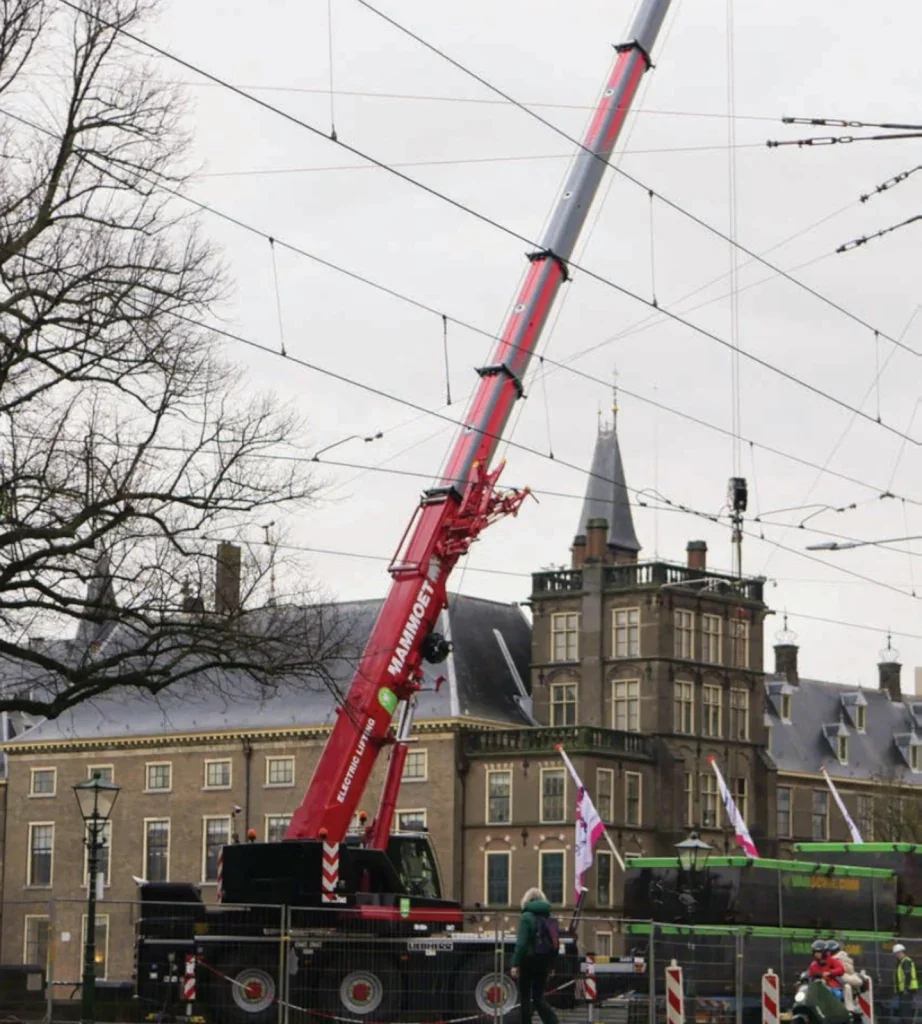
How do you see Mammoet’s electric crane fleet evolving over the next five to ten years?
We will continue to respond to the demands of our customers to deliver zero-emissions onsite lifting capabilities while at the same time working both internally and with suppliers to introduce new sustainable heavy lifting and transport options to our customers.
By delivering both the smallest and largest cranes in the world with electric lifting capability we will help drive down the carbon impact of heavy industry and showcase our market leadership.
How do the acquisition and operational costs of electric cranes compare to diesel models?
Electric cranes and any other types of electric-powered equipment require a substantial investment. But the limitations are more in the area of availability. With this fast-developing technology, it can be tough for suppliers to commit to investments in equipment across a range of capacities.
This is the reason Mammoet invested in engineering and building the first Hybrid 100 tonne cranes ourselves and successfully rebuilt a used SPMT powerpack and converted this to an electric version.
Are there incentives or government programmes that help offset the investment in electric cranes or incentivise their use?
There are some subsidies available in the Netherlands for example. These incentives promote the conversion of equipment to electric power. So this helps somewhat.
Do you think that these incentives are working?
We are currently at a stage where everybody seems to be testing the water. Mammoet wants to break the cycle of using fossil fuels to execute projects and showcase exactly what can be done.
What are the main barriers to faster and more widespread adoption of mobile electric cranes?
Greater availability of electric crane types and models in various capacities is needed, plus competitive pricing of this equipment. Clear regulations are needed, too.


